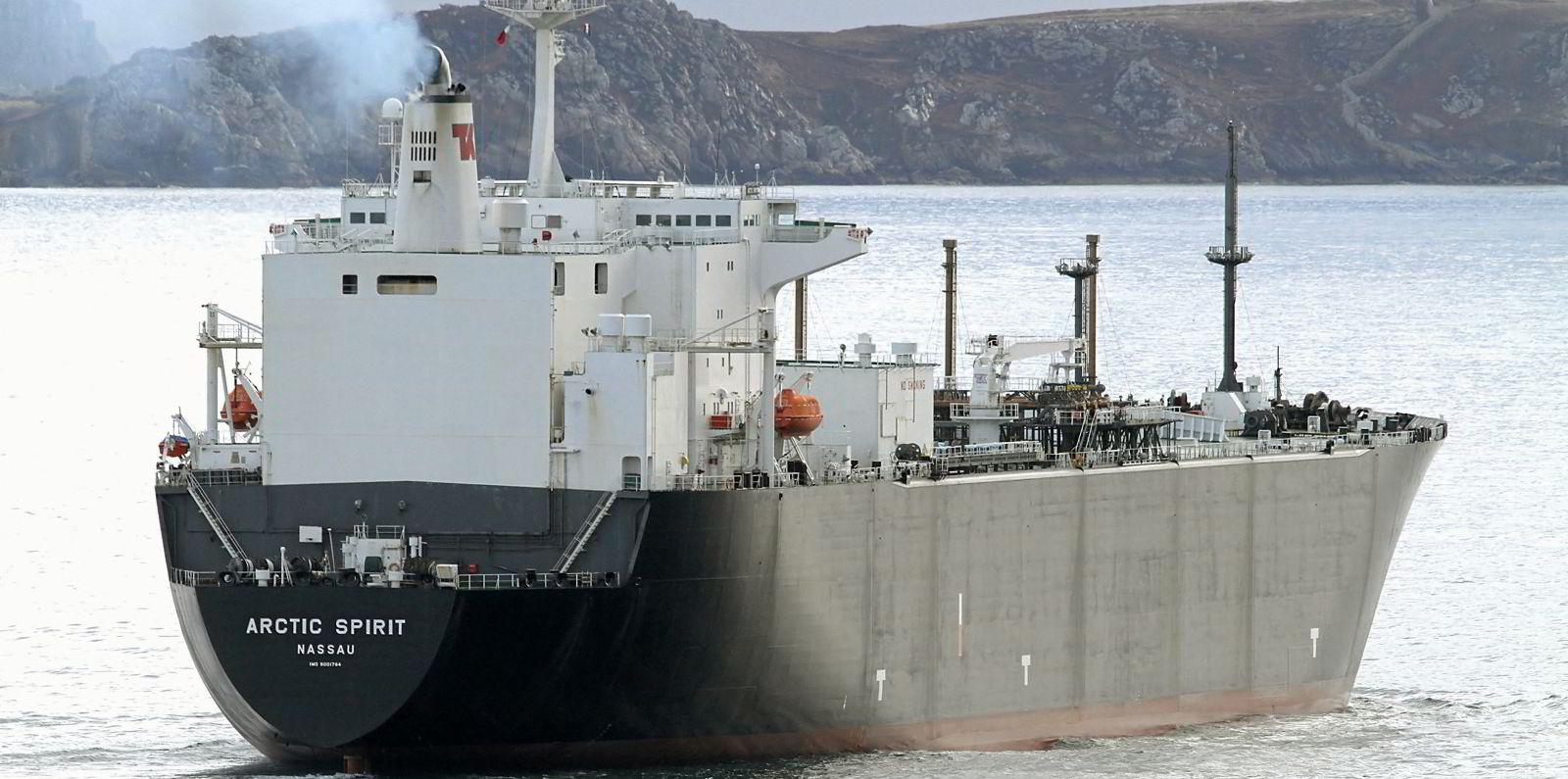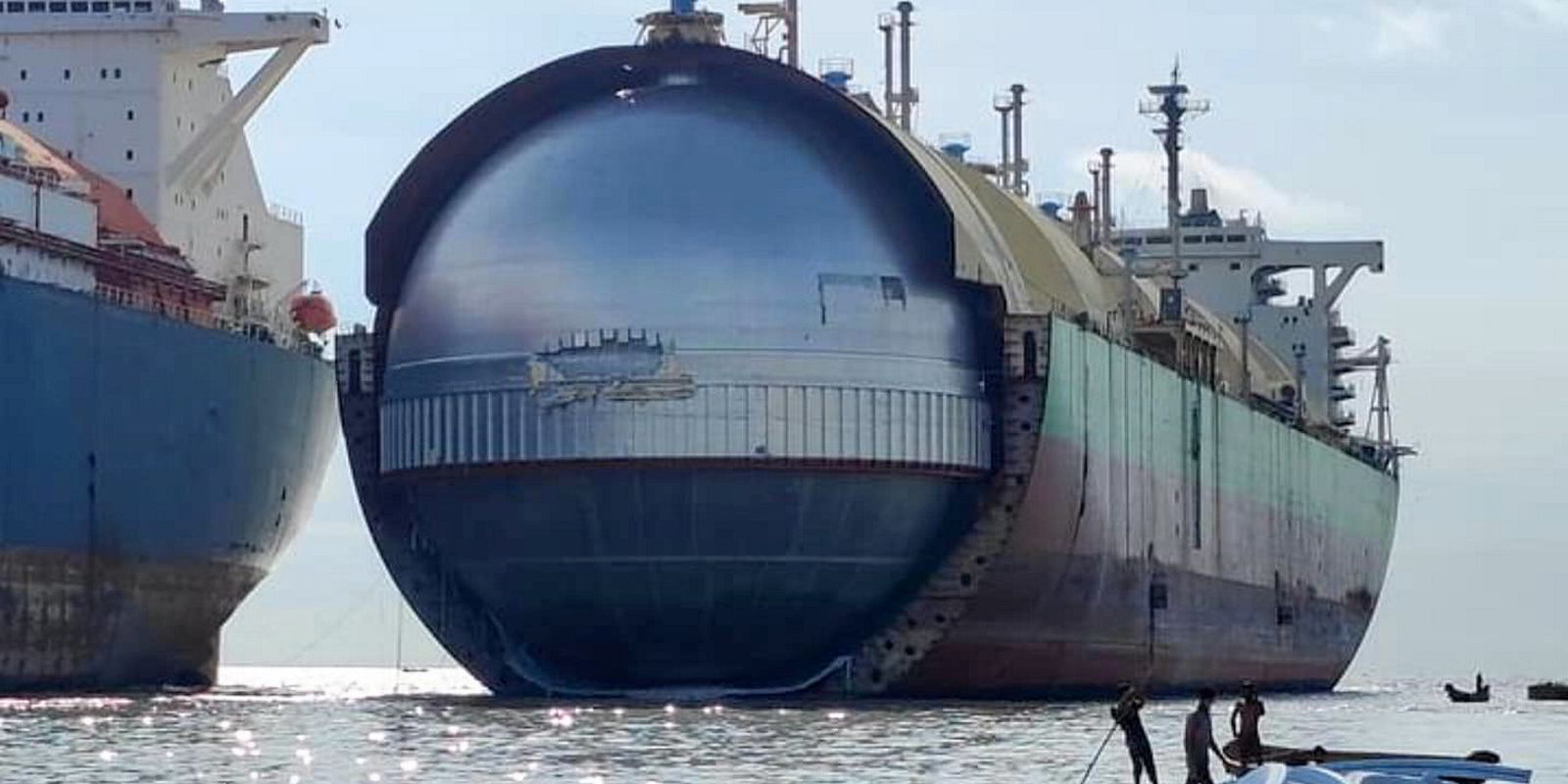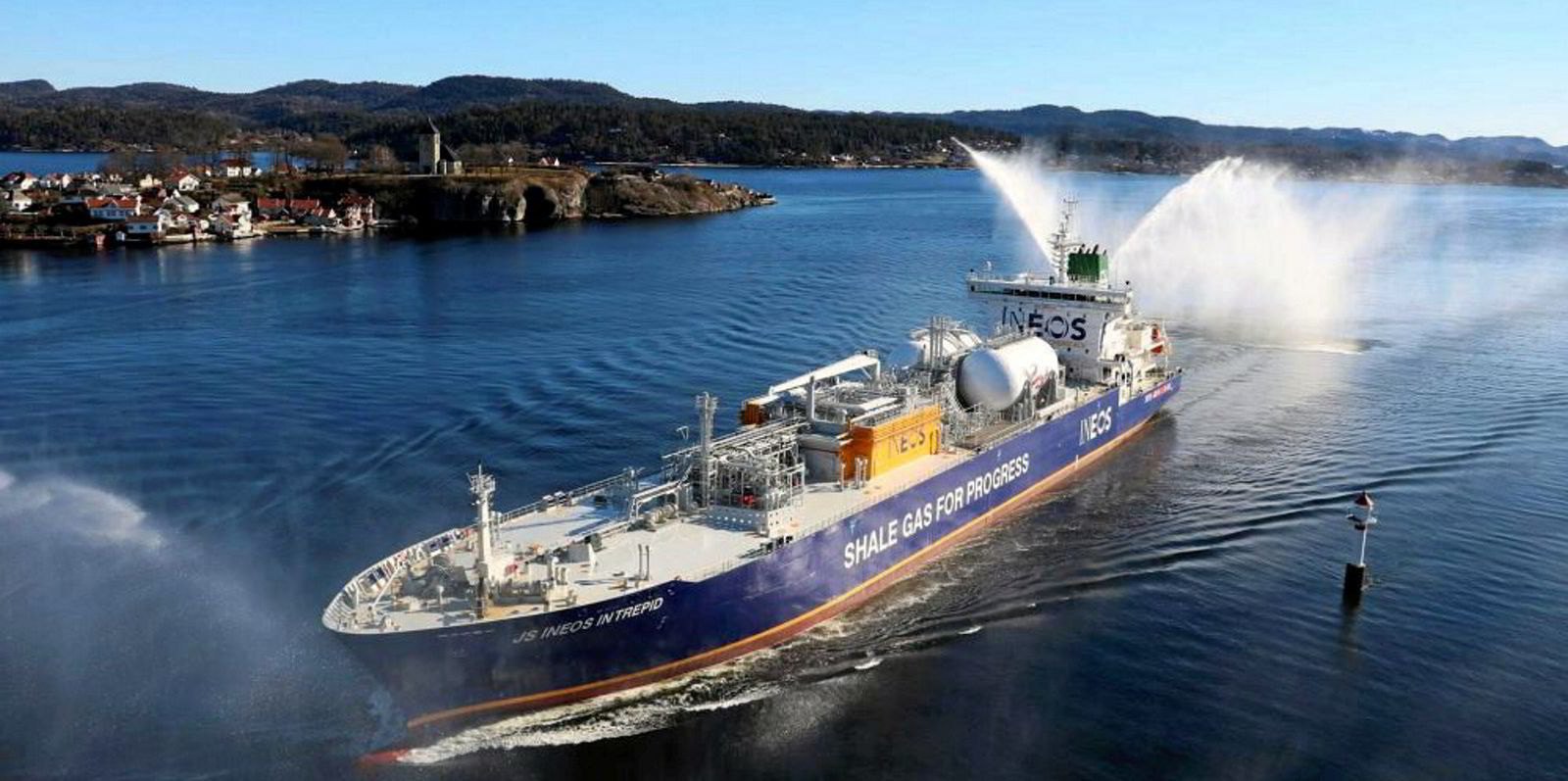A 30-year-old midsize LNG carrier is being circulated for scrap sale as fleet-renewal moves start to take hold among shipowners and operators in the sector.
Demolition specialists said the 89,880-cbm Seapeak Arctic (ex-Arctic Spirit, built 1993) is being offered for recycling.
One said the 24,000-ldt vessel is currently idle and out of class. It is available on an “as is” basis off Malaysia.
Demolition brokers said cash buyers, which were starved of tonnage in 2022, would likely pay levels in the mid-$500-per-ldt range for LNG tonnage.
But one broker added that high-value materials could push the price to more than $600 per ldt depending on the quantity.
This would equate to a total price of more than $13m and possibly over $14.5m if onboard materials prompt premium offers.
Seapeak declined to comment on the market talk when contacted by TradeWinds.
The Seapeak Arctic and its sistership — the Seapeak Polar — represent a pair of relative outliers in the world’s LNG fleet.
The two vessels demonstrate some of the earliest Medmax-size ships built at a time when the LNG carriers being constructed were predominantly of around 120,000-cbm to 130,000-cbm capacities.
The vessels — originally the Arctic Sun and Polar Eagle — were built to replace two smaller, 1960s-built LNG carriers constructed to serve the Kenai LNG plant in Alaska and ship cargoes to Japan.
Ground breakers
But in a ground-breaking move, the ships, which were built in Japan, were constructed with self-supporting prismatic type-B cargo tanks. These were designed to accommodate all levels of tank filling and so rule out damage from cargo sloshing. This would make them attractive for ship-to-ship operations where parcels of LNG were being transferred.
In recent years, the Arctic Spirit has been used by Malaysia’s Petronas and Chinese trader Jovo Group for breakbulk shipping of LNG cargoes.
Just one LNG carrier was sent for demolition last year, compared with a record seven in 2021.
The global LNG fleet boasts 45 vessels that are aged 25 years or more, with 17 of those listed as being 30 years old or above.
Sector observers expect more of the older and smaller vessels in the LNG fleet to either be scrapped or repurposed in conversion projects as shipowners move to renew and upgrade their fleets to comply with new emissions regulations.






